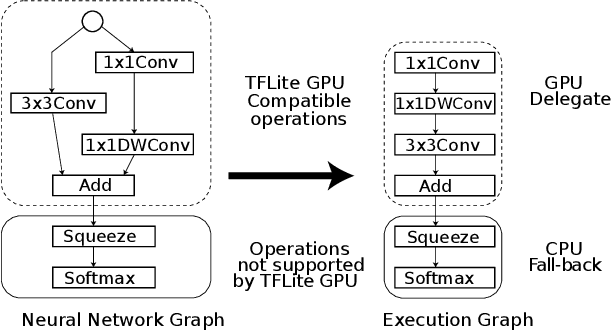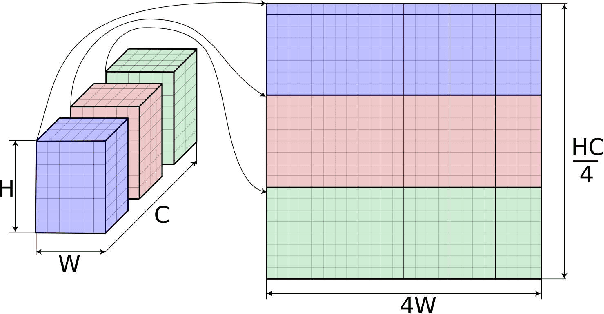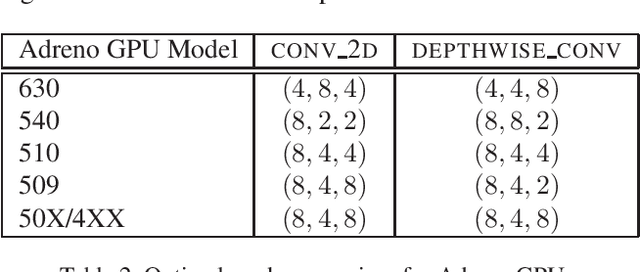Andrei Kulik
Speed Is All You Need: On-Device Acceleration of Large Diffusion Models via GPU-Aware Optimizations
Apr 21, 2023Abstract:The rapid development and application of foundation models have revolutionized the field of artificial intelligence. Large diffusion models have gained significant attention for their ability to generate photorealistic images and support various tasks. On-device deployment of these models provides benefits such as lower server costs, offline functionality, and improved user privacy. However, common large diffusion models have over 1 billion parameters and pose challenges due to restricted computational and memory resources on devices. We present a series of implementation optimizations for large diffusion models that achieve the fastest reported inference latency to-date (under 12 seconds for Stable Diffusion 1.4 without int8 quantization on Samsung S23 Ultra for a 512x512 image with 20 iterations) on GPU-equipped mobile devices. These enhancements broaden the applicability of generative AI and improve the overall user experience across a wide range of devices.
AI Benchmark: All About Deep Learning on Smartphones in 2019
Oct 15, 2019



Abstract:The performance of mobile AI accelerators has been evolving rapidly in the past two years, nearly doubling with each new generation of SoCs. The current 4th generation of mobile NPUs is already approaching the results of CUDA-compatible Nvidia graphics cards presented not long ago, which together with the increased capabilities of mobile deep learning frameworks makes it possible to run complex and deep AI models on mobile devices. In this paper, we evaluate the performance and compare the results of all chipsets from Qualcomm, HiSilicon, Samsung, MediaTek and Unisoc that are providing hardware acceleration for AI inference. We also discuss the recent changes in the Android ML pipeline and provide an overview of the deployment of deep learning models on mobile devices. All numerical results provided in this paper can be found and are regularly updated on the official project website: http://ai-benchmark.com.
On-Device Neural Net Inference with Mobile GPUs
Jul 03, 2019



Abstract:On-device inference of machine learning models for mobile phones is desirable due to its lower latency and increased privacy. Running such a compute-intensive task solely on the mobile CPU, however, can be difficult due to limited computing power, thermal constraints, and energy consumption. App developers and researchers have begun exploiting hardware accelerators to overcome these challenges. Recently, device manufacturers are adding neural processing units into high-end phones for on-device inference, but these account for only a small fraction of hand-held devices. In this paper, we present how we leverage the mobile GPU, a ubiquitous hardware accelerator on virtually every phone, to run inference of deep neural networks in real-time for both Android and iOS devices. By describing our architecture, we also discuss how to design networks that are mobile GPU-friendly. Our state-of-the-art mobile GPU inference engine is integrated into the open-source project TensorFlow Lite and publicly available at https://tensorflow.org/lite.
 Add to Chrome
Add to Chrome Add to Firefox
Add to Firefox Add to Edge
Add to Edge